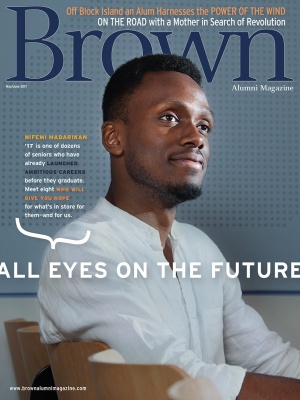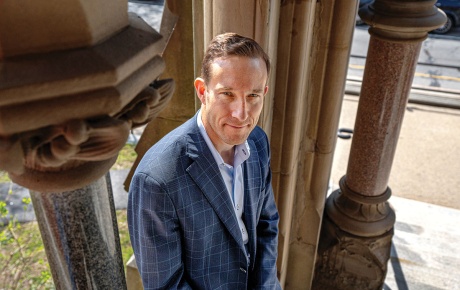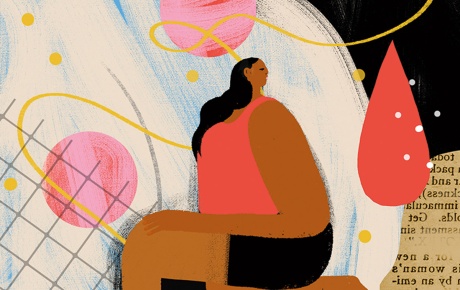Actress Meredith Baxter, looking weary, sits on a kitchen stool surrounded by health supplements. George Takei, of Star Trek fame, is engulfed by holiday wrapping paper and presents. Broadway choreographer Tommy Tune—tall, lanky, and dressed entirely in white—reclines on his Upper East Side penthouse terrace, talking on his cell, with Manhattan’s skyscrapers behind him and his reflection shimmering in a window.
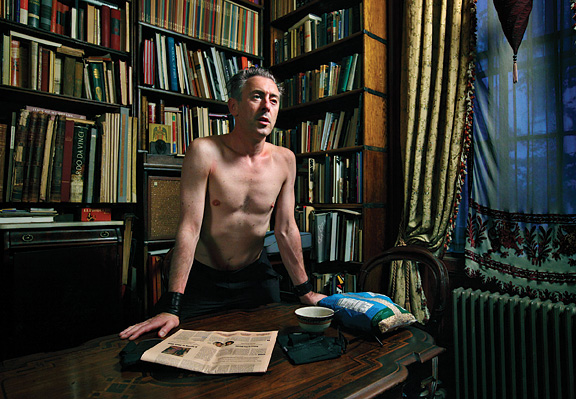
Earlier photo series of gay men, Atwood notes, “focused on younger, beautiful subjects with their shirts off, romping through the forest.” Instead, he wanted to make “more contemplative, serious images,” including some commemorating older men who had survived the HIV/AIDS epidemic.
“By photographing people at home in their native environment, I’m capturing a sense of who they are,” he says. “A lot of the moments are not planned. I set up lights and choose a corner to shoot in. I start talking to [the subjects] and see what evolves.”
Atwood’s earlier book, Kings in Their Castles, portrayed only men, mostly from New York City. For this more ambitious project, which also includes lesbians and transgender people, he traveled to thirty states. Among his subjects were four fellow alumni: film producer Christine Vachon ’83 (Still Alice, Boys Don’t Cry), designer and homeware magnate Jonathan Adler ’88, novelist Christopher Rice ’00, and singer Erin McKeown ’00.
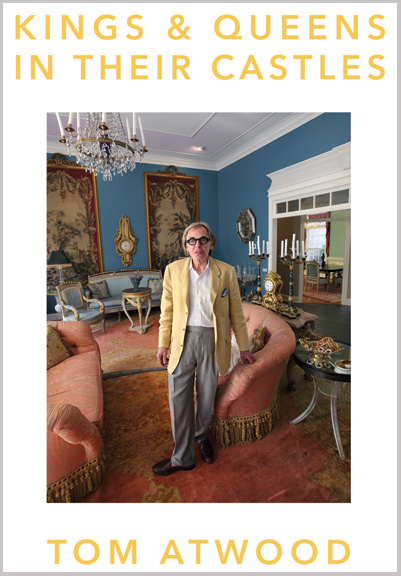
A self-taught photographer, Atwood has won numerous awards for his images, which have been exhibited at the Museum of Modern Art. He has dabbled in acting, painting, and sculpture; at Brown, where he concentrated in economics, he sang with the Brown Derbies. He transferred to Harvard after two years, in part to take architecture courses, and he holds a master’s degree in European Studies from Cambridge University.
“I like to compose photos that are beautiful like paintings,” Atwood says. His photos are filled with shadows and reflections, gestural echoes, and glimpses of landscape reminiscent of Renaissance portraits. He says he uses a wide-angle lens “to get as much into the frame as possible.”
His work also marks a cultural shift. A decade ago, he says, LGBTQ people wanted to show that “we were just like everybody else.” Atwood says he now feels freer to assert the presence of a “gay sensibility” associated with creativity and the avant-garde: “My style has a hint of camp in celebration of this.”

